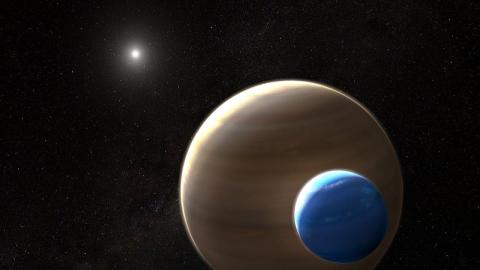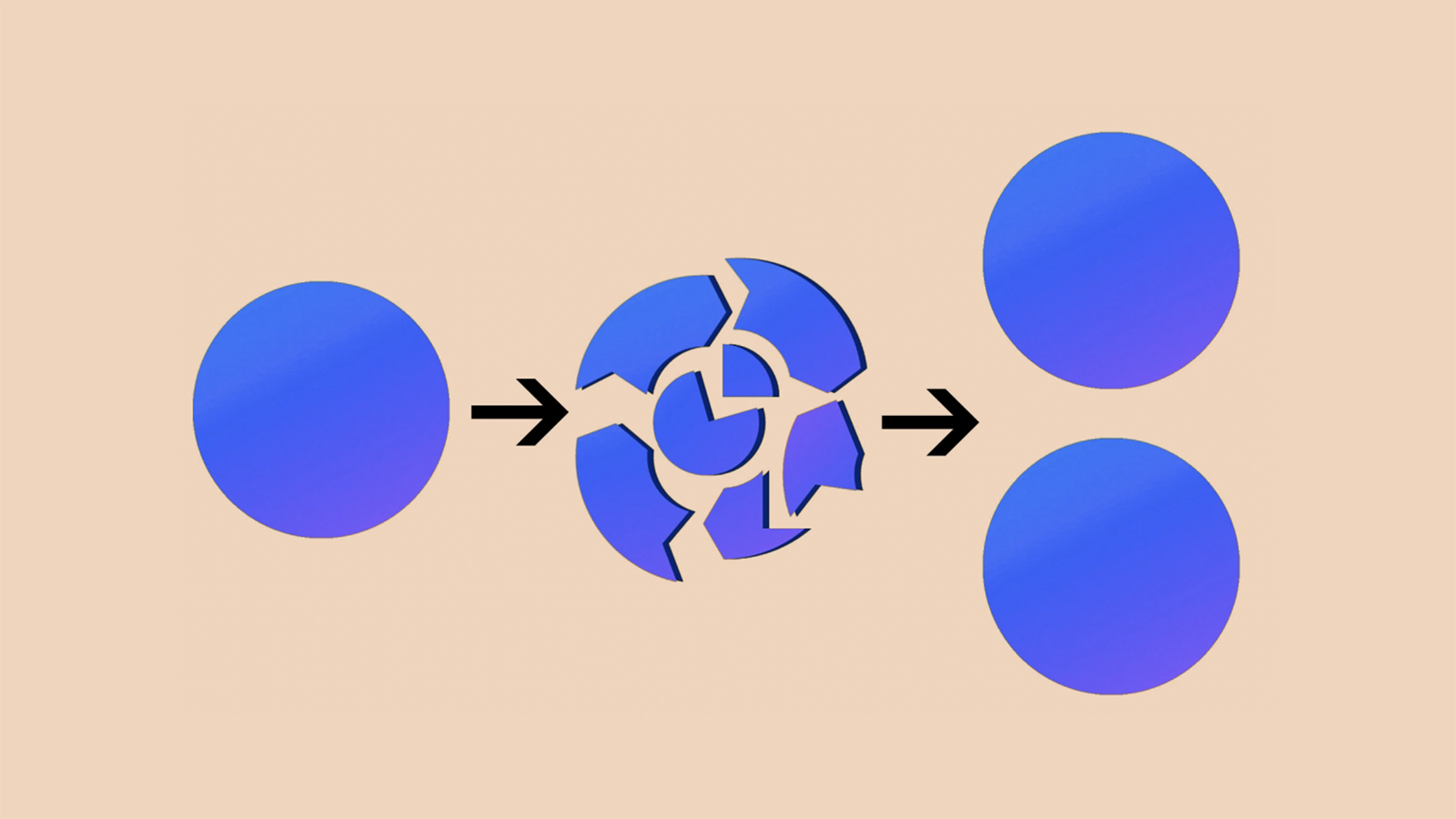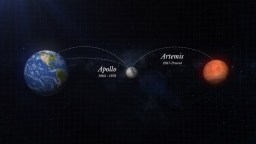Exoplanets with moons may be likelier to host life

By Hubble ESA - Exomoon orbiting its planet (artist's impression), CC BY 2.0, https://commons.wikimedia.org/w/index.php?curid=97338137
- A new study suggests that exomoons are common in multistar systems.
- Thus far, only a few exomoon candidates have been identified.
- Exoplanets with moons may be likelier to host life than those without moons.
Though Earth has only one (very special and precious) moon, the average planet in our solar system has 26 moons. (The range is from zero moons for Mercury and Venus to 82 moons for Saturn.) If the Milky Way has about 100 billion exoplanets, as astrophysicists suppose, then we can expect many more exomoons.
Finding these exomoons is the subject of a new paper recently published in the Astronomical Journal. By using the same techniques to find exoplanets, the researchers hope to show that exomoons are also common — and potentially a harbinger of life.
Hunting for exomoons
How do we know that stars other than our sun host planets? One common method of exoplanet detection is observing stars for slight dimming events that occur regularly — a telltale sign of a planet in transit around the star. This method, in use for about two decades, has proven very effective, and thousands of exoplanets have been identified using it.
Obviously, this is an indirect method of detection. The exoplanet itself is not observed but rather the effects it has on its star. Direct observation of an exoplanet is a bit more difficult — and an exomoon even more difficult. This does not mean it cannot be done, of course. It is just harder, so a lot exomoon candidates probably will end up being false positives.
It is only recently that strong evidence for exomoons has been gathered. The Atacama Large Millimeter Array in Chile recently recorded evidence that the exoplanet PDS 70c has a circumplanetary disk of material that could be forming into a moon. That planet, a gas giant twice the size of Jupiter, is one of the first serious contenders for an exoplanet with exomoons around it — or at least ones in formation.
In this new paper, the authors propose a method for making it a little easier to find exomoons around binary star systems, that is, pairs of stars that orbit one another. These systems are not uncommon; roughly 50 percent of stars are in multistar systems, with binary systems being the most common. (Some scientists suppose that the sun might once have been part of a binary pair, but this is unlikely.)
Binary systems change the math for how gravity impacts planets and how the transit method can be used. While a planet’s transit times can be impacted by having an exomoon, they are further impacted by other exoplanets as well as by the companion star. The new paper, therefore, demonstrates how a moon would impact the transit times of a planet in a system with two stars. In a certain number of cases, only a moon can explain the observed effects.
The study’s lead author, Billy Quarles of the Georgia Institute of Technology, expanded on this idea in a press release:
“The major difference with binary systems is the companion star acts like the tide at the beach, where it periodically comes in and etches away the beachfront. With a more eccentric binary orbit, a larger portion of the stable ‘real estate’ is removed. This can help out a lot in our search for moons in other star systems.”
Additionally, exoplanets too close to their stars are likely to not have moons at all as stellar forces can blow away the material that might combine to form a moon in the first place. (This possibly explains why Mercury and Venus do not have moons.) Indeed, in the PDS 70 star system, the planet closest to its star does not appear to have a moon.
Moons may be essential to life
In a press release, study co-author Siegfried Eggl of the University of Illinois at Urbana-Champaign explained further applications of the method in determining the habitability of exoplanets:
“If we can use this method to show there are other moons out there, then there are probably other systems similar to ours. The moon is also likely critical for the evolution of life on our planet, because without the moon the axis tilt of the Earth wouldn’t be as stable, the results of which would be detrimental to climate stability. Other peer-reviewed studies have shown the relationship between moons and the possibility of complex life.”
Maybe the discovery of exomoons is the first step to finding life elsewhere in the cosmos. Understanding the similarities and dissimilarities with our solar system is a great place to start.





